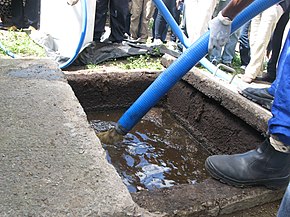 Drying Technology
Drying Technology
Keywords: sludgedryingtechnology、sewagesludgedryer
Fecal sludge management (FSM) (or faecal sludge management in British English) is the storage, collection, transport, treatment and safe end use or disposal of fecal sludge. Together, the collection, transport, treatment and end use of fecal sludge constitute the "value chain" or "service chain" of fecal sludge management. Fecal sludge is defined very broadly as what accumulates in onsite sanitation systems (e.g. pit latrines, septic tanks and container-based solutions) and specifically is not transported through a sewer. It is composed of human excreta, but also anything else that may go into an onsite containment technology, such as flushwater, cleansing materials (e.g. toilet paper and anal cleansing materials), menstrual hygiene products, grey water (i.e. bathing or kitchen water, including fats, oils and grease), and solid waste. Fecal sludge that is removed from septic tanks is called septage.

Fecal sludge collection can be arranged on a scheduled basis or on a call-for-service basis (also known as on-demand, on-request, or non-scheduled services). The collected fecal sludge may be manually or mechanically emptied, and then transported to treatment plants with a vacuum truck; a tank and pump mounted on a flatbed truck; a small tank pulled by a motorcycle; or in containers on a handcart. The wider use of multiple decentralized sludge treatment facilities within cities (to avoid long haulage distances) is currently being researched and piloted.
Fecal sludge is different to wastewater and cannot simply be co-treated at sewage treatment plants. Small additions of fecal sludge are possible if plants are underutilized and able to take the additional load, and facilities to separate liquids and solids are available.A variety of mechanized and non-mechanized processing technologies may be used, including settling tanks, planted and unplanted drying beds, and waste stabilization ponds. The treatment process can produce resource recovery end-products such as treated effluent that can be used for irrigation, co-composting as a soil conditioner, anaerobic digestion for the production of biogas, forms of dry-combustion fuel such as pellets or biochar, charcoal, biodiesel, sludge and plants or protein production as animal fodder.
Copy from:https://en.wikipedia.org/wiki/Fecal_sludge_management